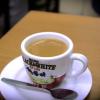-
Welcome to the eG Forums, a service of the eGullet Society for Culinary Arts & Letters. The Society is a 501(c)3 not-for-profit organization dedicated to the advancement of the culinary arts. These advertising-free forums are provided free of charge through donations from Society members. Anyone may read the forums, but to post you must create a free account.
How much hondashi (power) = katsuobushi?
-
Similar Content
-
- 40 replies
- 2,330 views
-
- 18 replies
- 519 views
-
Reviewing food history: How much do you take your kitchen and your modern conveniences for granted? 1 2
By Tropicalsenior,
- 26 replies
- 1,415 views
-
- 335 replies
- 69,236 views
-
- 825 replies
- 163,326 views
-
-
Recently Browsing 0 members
- No registered users viewing this page.







Recommended Posts